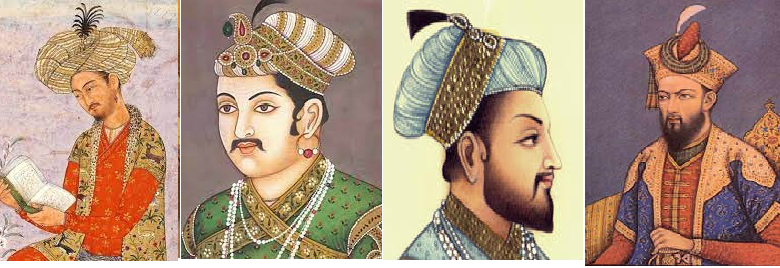Impact of Mughals on India subcontinent

This post discusses the impact of the Mughal rule on India in terms of governance, religions, art, and architecture, culture, etc.
Contents
Impact of the Mughal rule on India
The following is a thematic explanation of the impact of the Mughal rule on India.
1. Synthesis of Indo-Islamic culture
The Mughal period (1526 – 1858) gave birth to a new composite culture in India called Indo-Islamic culture as a result of interaction between Mughals with the local Indians. For instance, today’s vocal styles of present-day Pakistan’s music i. e. Khayal, Dhrupad, and thumri are an amalgam of both Persian and Indian musical aspects that developed along with new instruments and instrumental forms during the Mughal period. (Farrell, 2000).
Similarly, Mughals developed a syncretic architecture reflecting both Islamic and Indian styles. For instance, Mihrabs, minarets, jalis, and Chatteris featuring the Indo-Islamic architecture patronized by the Mughals reflect an amalgam of both Islamic and Indian architectural styles.
2. Promotion of literature and languages
Mughals patronized the development of literature in Sanskrit, Hindi, Persian, and Urdu. For instance, during the reign of Akbar, a number of local classics and histories along with various Greek and Arabic books were translated into Persian. The Mughal king encouraged people to write illustrations related to a variety of disciplines such as poetic work, myth, legends, fables, etc. Tuti Nama and the Dastan -e- Amir Hamzah is some of the prominent literary works patronized by Akbar.
The legacy was carried forward by the later Mughals as they supported literary activities at their courts. They encouraged literary people and provided a respectable place in the empire.
Another contribution of the Mughals was the promotion and development of Urdu. The Mughal Kings such as Muhammad Shah and Bahadur Shah Zafar arranged Mashairas at their courts. Bahadur Shah Zafar himself was an Urdu poet.
3. Administrative consolidation
Non-one ruled all over India at a time. It was the Mughals who brought India under one domain for the first time. Through a policy of religious toleration and integration, the early Mughals rulers built alliances with the Rajputs kings in the Indian subcontinent who in turn accepted the Mughals as the paramount power. They connected different regions together through increased trade carried out both overland and by sea.
4. Encouragement of co-existence
As mentioned earlier, the Mughals adopted a policy of religious toleration until the assumption of power by Aurangzeb in 1757. Before Aurangzeb, the Mughal kings allowed Hindus to live their life as per their beliefs. They permitted building new Hindu temples in the empire. The first act of Zahirudin Babur after conquering Delhi was to forbid cow slaughter because that was offensive to Hindus.
5. Promotion of Trade
Trade with the rest of the Islamic world, especially Persia and through Persia to Europe, was encouraged. They encourage trade among different regions within the Indian subcontinent as well as with the outside world both overland and by sea.
With their rise to power in India in the 16th century, Mughals deepened the pre-existing trade links between India and Central thus accelerating the movement of people in between. (Alam, 1994). Trade with Central Asia was carried out overland through the Khyber pass, Karakoram mountains, etc. Trade also continued between the two regions through the Persian Sea also. Alam (1994) has noted that the trade between Mughal India and Central Asia continued, the institutions of learning, religion, and politics in each area bore the imprint of the other.
6. Consolidation of Islam
The Mughal were Sunni Muslims that provided a space for Sufis and religious missionaries to invite local people to the fold of Islam. Mughals did not encourage any forceful conversions. The Muslim rule also acted as a deterrent for any anti-Islam movement in the Indian subcontinent. Consequently, the Muslim culture, art, and architecture flourished in India with the incorporation of many indigenous elements called Indo-Islamic culture.
The later Mughals, Islamic Sharia laws were implemented with the proliferation of Mosque and adoption of anti-Hindu policies during Aurangzeb’s period only to sow the seeds of the gradual decline of the Mughal empire.
References
1. Farrell, G. (2000). Imaging Sound: An Ethnomusicological Study of Music, Art, and Culture in Mughal India.
2. Alam, M. (1994). Trade, state policy and regional change: aspects of Mughal-Uzbek commercial relations, C. 1550-1750. Journal of the Economic and Social History of the Orient/Journal de l’histoire economique et sociale de l’Orient, 202-227.




